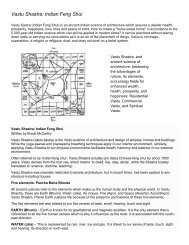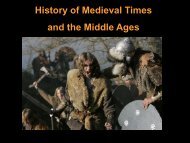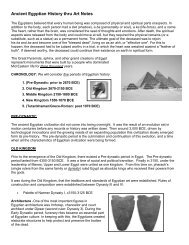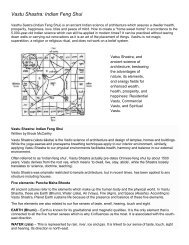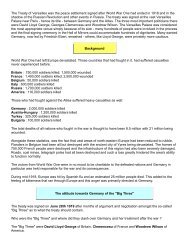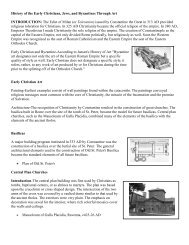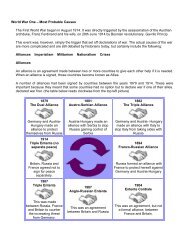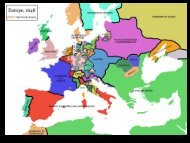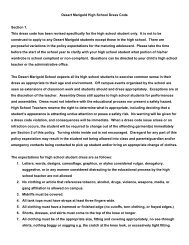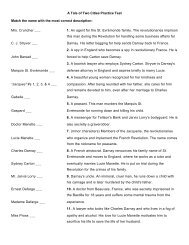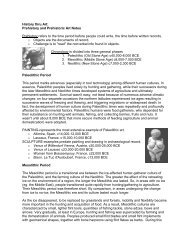Baroque and Rococo notes.pdf - DMHScommunity
Baroque and Rococo notes.pdf - DMHScommunity
Baroque and Rococo notes.pdf - DMHScommunity
Create successful ePaper yourself
Turn your PDF publications into a flip-book with our unique Google optimized e-Paper software.
The <strong>Rococo</strong> (c. 1700 - 1760)<br />
"<strong>Rococo</strong>" describes a movement in the arts in the early 18th century, primarily in France. <strong>Rococo</strong> has been<br />
born from the <strong>Baroque</strong> era, during the Age of Enlightenment. That was a time when new ideas about human<br />
existence were introduced <strong>and</strong> <strong>Rococo</strong> art is the visual representation of the optimism people felt in response<br />
to that.<br />
The word "rococo" is derived from "rocaille", meaning "rock work" or "shell work," a favorite motif of the time.<br />
It stresses purely ornamental, light, casual, irregular design.<br />
<strong>Rococo</strong> is seen both as the climax <strong>and</strong> fall of <strong>Baroque</strong> art. After the heavy works created in the <strong>Baroque</strong><br />
style, artists were ready for a change. The <strong>Rococo</strong> manner was a reaction against the” gr<strong>and</strong> manner" of art<br />
identified with the baroque formality <strong>and</strong> rigidity of court life. The movement toward a lighter, more charming<br />
manner began in French architectural decoration at the end of Louis XIV's reign (d.1715) <strong>and</strong> quickly spread<br />
across Europe. During the regency of Duke of Orleans, regent for the minor heir Louis XV, the formalities of<br />
the court gave way to a more casual <strong>and</strong> intimate atmosphere. <strong>Rococo</strong> art portrayed a world of artificiality,<br />
make-believe, <strong>and</strong> game-playing. Although less formal, it was essentially an art of the aristocracy <strong>and</strong><br />
emphasized what seems now to have been the unreflective <strong>and</strong> indulgent lifestyles of the aristocracy rather<br />
than piety, morality, self-discipline, reason, <strong>and</strong> heroism, which were found in the baroque.<br />
The <strong>Rococo</strong> style is characterized by pastel colors, gracefully delicate curving forms, fanciful figures, <strong>and</strong> a<br />
lighthearted mood (visually <strong>and</strong> physically). The essence of <strong>Rococo</strong> art is light. Extreme highlights are placed<br />
on the subject matter <strong>and</strong> the overall work is light in color, effect, <strong>and</strong> emotion. Artists paid special attention to<br />
fine detail. Form is characterized by delicacy of color, dynamic compositions, <strong>and</strong> atmospheric effects.<br />
Antoine Watteau is considered to be one of the first <strong>Rococo</strong> painters. Others include Jean-Honore<br />
Fragonard, Francois Boucher, Thomas Gainsborough, <strong>and</strong> Giovanni Battista Tiepolo.<br />
Eventually the <strong>Rococo</strong> art was replaced by the more serious style, Neoclassicism. Critics condemned rococo<br />
as "tasteless, frivolous, <strong>and</strong> symbolic of a corrupt society".



